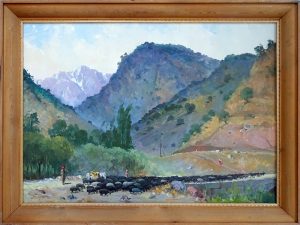tajik artists. The art of painting has a long history, the first examples of which belong to the Mesolithic period. During this period, red, yellow, white, liver, and wood stains were used as paints, and through fingers or pieces of hair, they depicted moments of hunting, separate animals, etc. In the second half of the last century, special importance was given to the development and style of Tajik art. The contribution of Russian artists is significant in the development of Tajik visual arts and the education of painters. In addition, the establishment of the Fine Art Museum in Dushanbe contributes to the development of fine art. On May 5, 1947, such a museum was established in Dushanbe, and in 1959, it was merged into the Museum of History and Country Studies. On November 27, 1999, the museum was granted national status. The purpose of creating the Museum of Fine Arts was to collect, preserve and present to the public the works of Tajik painters. In particular, the number of professional artists increased. Tajik painters created works in all genres of visual arts, most of which are kept in the treasury of the National Museum. The founders of today’s Tajik art school P. Falbov, E. Burtsev, I. Ershov, A. Ashurov, later M. Khoshmuhamedov and others who worked in the early 30s of the 20th century and represented the professional art of Tajikistan. Examples of visual arts include landscape painting, painting, etude, Qalamkashi (pencil drawing), theater, sculpture, engraving, engraving, etc. It should be noted that more than 3,000 paintings in various genres of fine art are preserved in the fund of the National Museum.
Welcome to the National Museum!






